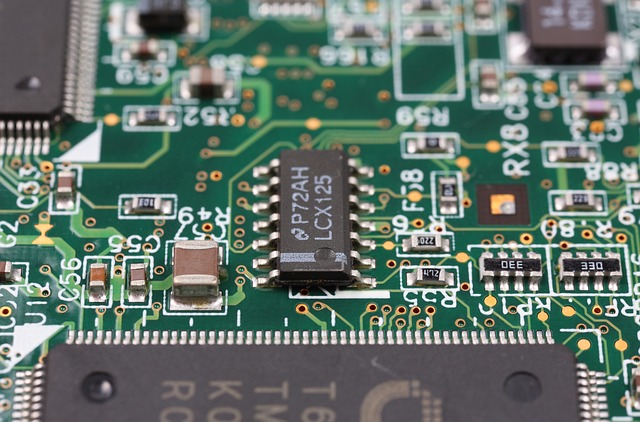How Is Artificial Intelligence Improving Cybersecurity?
One of the most impressive ways AI boosts cybersecurity is through its ability to identify threats in real time. Just as a skilled detective reads between the lines of a case, AI algorithms scrutinize vast amounts of data to spot unusual patterns or anomalies that might indicate a security breach. This proactive approach means potential threats can be neutralized before they even have a chance to cause damage.
Moreover, AI isn’t just reacting to known threats but also predicting future ones. It’s a bit like having a crystal ball that helps foresee potential cyber attacks before they materialize. By analyzing trends and behaviors, AI can anticipate new types of attacks and prepare defenses accordingly. This predictive capability is crucial as cybercriminals constantly evolve their tactics.
Then there’s the automation of repetitive tasks. Just like how a factory robot handles repetitive tasks with precision and speed, AI takes over mundane cybersecurity duties, such as monitoring network traffic or updating threat databases. This automation frees up cybersecurity professionals to focus on more complex issues that require human insight, making the whole system more efficient.
In essence, AI enhances cybersecurity by being vigilant, predictive, and efficient. It’s like having a top-tier security team that never sleeps, constantly on guard and always a step ahead of potential threats. This high-tech vigilance ensures a more robust defense against the ever-evolving landscape of cyber threats.
AI-Powered Defense: How Machine Learning is Revolutionizing Cybersecurity
Think of machine learning as a vigilant security guard who never sleeps. It scans network traffic, user behaviors, and system anomalies in real time. Unlike conventional security systems that flag known threats, machine learning algorithms identify new, previously unseen patterns that could indicate an attack. This means it can spot and neutralize emerging threats before they escalate into serious breaches.
One of the most impressive aspects of AI-powered defense is its ability to reduce false positives. Traditional systems often trigger alerts for benign activities, overwhelming IT teams. Machine learning, however, fine-tunes its understanding of what constitutes normal behavior, drastically cutting down on these nuisance alerts and allowing teams to focus on genuine threats.


From Threat Detection to Prevention: The Role of AI in Modern Cybersecurity
AI’s role in modern cybersecurity is nothing short of revolutionary. It’s not just about spotting problems but also about stopping them before they escalate. Think of AI as having a highly trained watchdog with an uncanny ability to sniff out suspicious activity. Traditional methods might rely on patterns and past data, but AI goes further, learning and adapting in real time.
Instead of waiting for an attack to happen, AI proactively analyzes massive volumes of data, identifying unusual behavior and potential threats before they can cause harm. It’s like having a crystal ball that predicts trouble before it even appears on the radar. For instance, AI systems use algorithms to detect anomalies that might indicate a security breach. These systems don’t just react; they anticipate.
Consider how AI handles phishing attacks. It’s like having an expert detective who can spot a fake email or fraudulent link in seconds. While humans might need time to analyze and verify, AI’s algorithms can instantly cross-reference emails with known threats, flagging them before they reach your inbox.
Moreover, AI’s ability to integrate with existing security systems enhances its effectiveness. It works seamlessly with firewalls, antivirus programs, and other defenses, boosting their performance. It’s like upgrading your city’s security network with cutting-edge technology that makes every system smarter and more responsive.
In essence, AI in cybersecurity is like having an ever-watchful guardian who evolves with the threats, ensuring that your digital life remains secure and uninterrupted.
How Artificial Intelligence is Enhancing Cybersecurity Strategies Against Evolving Threats
Imagine AI as the ultimate security guard, one that never sleeps and can analyze mountains of data in seconds. Traditional security systems are like having a single guard watching over a sprawling estate, constantly scanning for intruders. But with AI, it’s like having an army of vigilant guards who can instantly spot and neutralize threats, even the ones they’ve never seen before.
AI enhances cybersecurity strategies in several game-changing ways. First off, its machine learning algorithms can detect anomalies with astonishing precision. Think of it as spotting a needle in a haystack – AI can identify unusual patterns or behaviors that signal potential attacks. For instance, if a user starts accessing files they normally wouldn’t, AI flags this as suspicious, even if the activity is subtle.
Moreover, AI doesn’t just react; it anticipates. By analyzing historical data and recognizing emerging patterns, AI can predict and prepare for new types of cyber threats. It’s akin to having a crystal ball that not only shows what’s coming but helps prepare defenses in advance.
But that’s not all. AI can automate responses to threats, reducing the response time from minutes to milliseconds. Picture this: a cyberattack hits, and AI immediately springs into action, isolating affected systems and neutralizing the threat before you can blink. This speed and efficiency are crucial when dealing with sophisticated cybercriminals.
AI in Action: Real-World Success Stories of Enhanced Cyber Protection
Take, for instance, the story of a major financial institution that faced a relentless barrage of cyber-attacks. Traditional methods were like using a picket fence against a tidal wave. Then, they integrated an AI-driven security system, and the game changed. This system wasn’t just another layer of defense—it was a proactive sentinel. By analyzing vast amounts of data at lightning speed, it could detect patterns and anomalies invisible to the human eye. It was like having an elite squad of guards who not only saw the threats but anticipated them before they even materialized.
In another compelling case, a global retail giant encountered a sophisticated ransomware attack that encrypted their entire database. With the clock ticking, they deployed an AI-powered solution that swiftly identified and isolated the malicious code. Think of it as a digital fire extinguisher, snuffing out the flames of the attack before they could spread further. This AI system wasn’t merely reacting; it was predicting and neutralizing threats in real-time, minimizing damage and downtime.
Even smaller enterprises are reaping the benefits. A startup in the tech industry used AI to bolster its defenses against phishing scams. By learning from each attempted attack, the AI adapted its algorithms, becoming more adept at spotting fake emails and malicious links. It’s like having a security guard who gets smarter with every trick the criminals try.
These success stories highlight a pivotal truth: AI isn’t just enhancing cyber protection; it’s revolutionizing it. It’s the difference between a flimsy lock and a high-tech security system that’s always on alert, ready to counteract even the most sophisticated threats.
